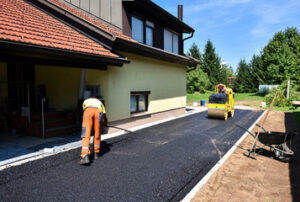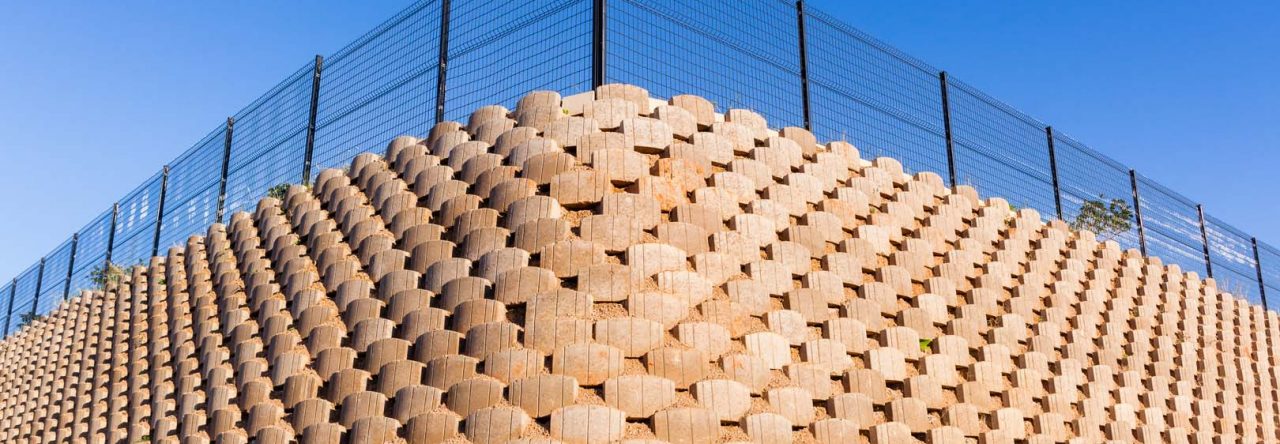Your driveway is the first thing passersby see, and it can be a huge part of your home’s curb appeal. Whether your driveway is made of asphalt, concrete, or gravel, it requires regular maintenance.

Driveway Repair Charles Town WV ranges from removing unsightly grease and oil stains to resurfacing with a concrete overlay. However, if the problem is significant, you may need to replace it altogether.
Concrete is a durable material and it can last for several years without needing replacement, but as time goes by, cracks and other problems develop. If these issues are not dealt with quickly, they may become worse and pose tripping hazards or damage the surface of your home’s foundation. Whether you want to repair your driveway or replace it, the first step is to figure out what caused the problem and then determine which solution is best for you (read Troubleshooting Advice).
Driveways made of different materials tend to have slightly different maintenance needs. For example, gravel driveways can be a magnet for weed growth and must be swept on a regular basis to remove them. They also need to be resealed to prevent moisture and erosion. Concrete driveways, on the other hand, often need resurfacing to deal with pitting, small cracks and discoloration. Concrete resurfacing is a fairly simple do-it-yourself project that you can complete yourself if you follow the right steps.
If your concrete driveway has rust stains, the first thing you need to do is apply a commercial rust remover that’s safe for use on concrete, such as Iron OUT (available from Amazon). It should be brushed onto the stain and left for the recommended time before spraying with clean water. Repeat the process as needed until the rust is removed.
Oil stains are another common issue that requires quick action. These stains are more visible on concrete than asphalt, which is why they need to be cleaned up promptly. To get rid of these unsightly stains, start by using an ultra-absorbent product such as cat litter. Sprinkle the dry powder over a fresh stain and leave it there for a couple of hours to soak up as much of the oil as possible. Then give the area a good scrub with a mixture of baking soda and water. The alkali in the baking soda dissolves grease and oils.
If the stain persists, you may need to use a chemical paint stripper. These chemicals are caustic and should be used only if you’re willing to take the risk. It’s a good idea to have a friend or neighbor help you with this project because the fumes from the stripper can be quite strong.
Patch the Cracks
Every driveway suffers cracking over time. Some of it’s natural and unavoidable, but there are also ways to reduce the problem and make your concrete look newer longer. It’s important to deal with any cracked areas as soon as possible, otherwise the fissures will only get worse over time. While you may be able to patch and fill small cracks, anything wider will likely need professional attention.
Most of the cracks in a driveway are less than a quarter-inch wide and don’t indicate any serious damage to the surface or underlying concrete. These are called hairline cracks and are usually the result of shrinkage after the concrete was poured.
Cracks that are larger than a quarter-inch should be filled with foam backer rod before you apply any type of crack filler or sealant. This will help keep the crack from opening up again once the sealant dries. If you’re not a professional contractor, you may want to hire a professional for this step to avoid further damage to your concrete driveway.
Before starting any repairs, hose down the damaged area and spray it with an environmentally safe detergent. This will remove any dirt or debris from the cracks so that your repair will last as long as possible. Then, sand the rough edges of the damaged area with an orbital sander fitted with coarse-grit sandpaper to smooth it out.
If the cracks in your driveway are very large, you will need to dig out and replace the affected sections of your concrete driveway. A professional contractor can handle this much more effectively, but it will still be a major job that will take some time. Until then, try to avoid parking on the damaged section of your driveway to prevent further damage.
Fill Sunken Sections
If there are areas in your driveway that have begun to sink, this can be a safety issue for pedestrians and vehicles. While this type of problem isn’t always caused by a bad concrete job, it is often the result of poor soil movement and drainage problems. Fortunately, there are steps you can take to minimize or stop the sinking in these sections of your driveway.
First, you’ll want to make sure that the area is free of any dirt or debris, as this can interfere with the repair process. Use a broom, blower, garden hose, or pressure washer to clear away any material that has accumulated in the damaged area. Once the area is clean, you can begin working on the actual concrete repair.
For cracks and holes that are less than half an inch wide, you can simply fill them using a concrete patching compound. This type of repair product can be purchased at any home improvement store and is easy to use. Just follow the instructions on the packaging to mix and apply. Once the patch has been cured, you can then smooth it with a putty knife to remove any air bubbles.
Larger cracks or sunken sections can be repaired by digging out the old concrete and pouring new concrete into its place. The good news is that this is much less expensive than replacing the entire driveway and it doesn’t require removing any existing trees or landscaping.
If the concrete is badly stained, you may want to consider having it resealed rather than replacing it. This type of treatment can give the concrete a fresh look and also protect it from damage by moisture.
It is a good idea to choose a sealant that has been specifically formulated for use on concrete, as this will help prevent it from becoming brittle over time. It’s best to apply two thin coats of the product, allowing it to dry between each application.
In the event that your concrete driveway is in very poor condition, it’s best to hire a professional. There are services that specialize in this type of work, and they offer a number of different options for your concrete driveway repair. These can range from a simple color enhancement with a coat of stain to full concrete resurfacing with a decorative overlay.
Smooth Out Rough Edges
If your driveway has areas that are not level, it’s important to get these areas repaired quickly. Uneven concrete surfaces are not only unsightly, but they also represent a safety hazard for vehicles and pedestrians. In addition, water or ice can collect in these uneven areas and cause additional damage.
Concrete is more durable than asphalt, but it does require regular maintenance to keep it looking its best and functioning at its optimum. To help prevent further damage, you can apply a concrete sealant to your driveway after repairing any cracks or sunken sections. This will protect the concrete from moisture, stains and chemicals, and extend its life.
Over time, every driveway will experience some form of damage. Some of these damages will be minor, such as small cracks, while others may require a complete replacement. Small cracks, sometimes referred to as hairline cracks, are normal and typically don’t indicate any serious structural issues. However, if these cracks are left untreated, they will eventually deepen and can be very difficult to repair.
Edge cracking is often caused by a lack of support along the edge of the driveway. It can also be caused by poor drainage, a sub-base that is too thin, and asphalt shrinkage. Edge cracks are more difficult to fix than major surface cracks and should be addressed as soon as possible to avoid further damage.
For minor edge cracks, you can use an asphalt crack filler to repair them and smooth out the rough edges. Make sure the area is completely dry from cleaning, and follow the manufacturer’s instructions for applying the crack filler.
For larger cracks, you may need to consider hiring a professional concrete contractor for a full-on driveway replacement. This is a more expensive option, but it will provide a more durable surface that will last much longer than any asphalt repairs.
